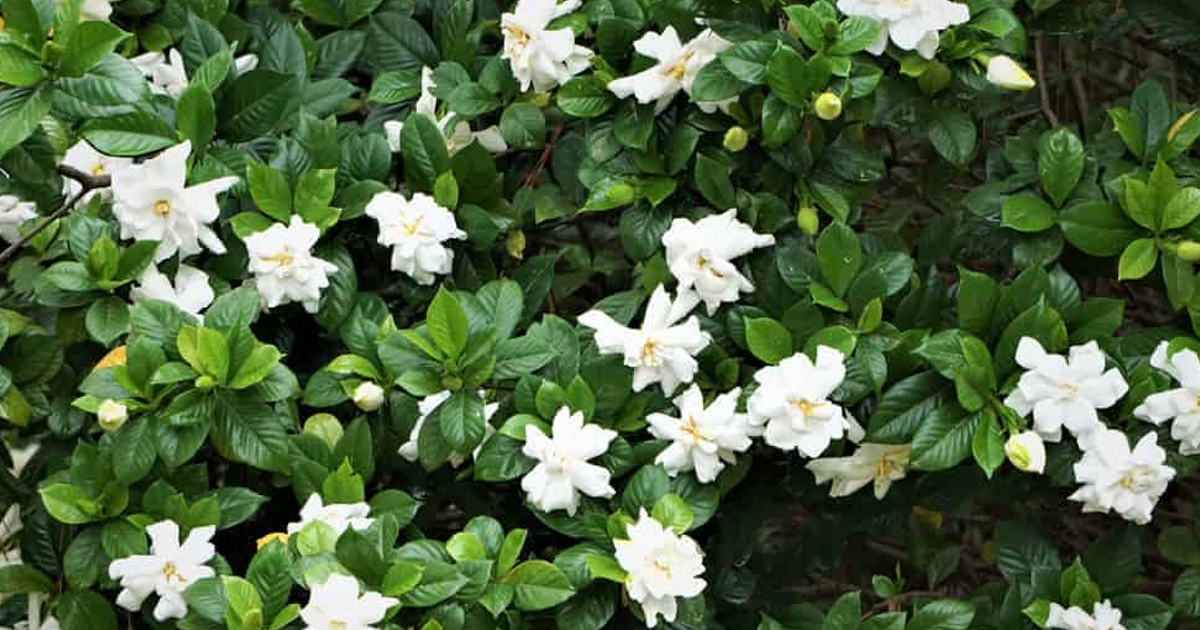
These flowers are known for their graceful white blooms and sweet scents, which make them a perfect addition to indoor and outdoor gardens. But these lovely plants are notoriously delicate and require very specific care to survive. One common issue that gardeners face with gardenias is yellow leaves, or chlorosis. The cultural condition is alarming, but yellowing leaves can sometimes be treated with the appropriate care.
This article will explain the causes of yellowing gardenia leaves and practical ways to heal them.
Why Are My Gardenia Leaves Turning Yellow?
The gardenia is a delicate plant; yellow leaves may be an expression of several causes. By identifying the root cause, healing is the next step, and here are the causes:
1. Nutrient Deficiency
Gardenias require a balanced diet of essential nutrients, especially iron, magnesium, and nitrogen. Yellowing leaves result from deficiencies in these nutrients:
- Iron Deficiency: This generally causes interveinal chlorosis, where the veins of the leaves stay green, but the space between them turns yellow.
- Nitrogen Deficiency: Lack of nitrogen results in yellowing of older leaves, starting from the bottom of the plant.
- Magnesium Deficiency: Yellowing begins at the margins of older leaves, forming a green triangle at the base.
2. Overwatering or Underwatering
Too much water or too little water are the most common causes of yellow leaves:
- Overwatering will drown roots, rot them, and prevent them from drawing in necessary nutrients. Yellow leaves occur, and the plant will start to droop.
- Underwatering causes stress on the plant. The leaves become dry and yellowish and then drop off the plant.
3. Soil pH Imbalance
Gardenias require acidic soil with a pH range of 5.0 to 6.5. If the soil becomes too alkaline, it is hard for the plant to absorb nutrients such as iron, which turns yellow in leaves.
4. Pests and Diseases
There are some pests and diseases that can cause yellowing leaves:
Aphids, spider mites, and whiteflies suck out sap from leaves, which will weaken the plant and discolour.
Poor drainage or too much water leads to root rot and fungal infections, which cause yellowing and wilting.
5. Temperature Stress
Gardenias prefer temperate temperatures between 65-70°F (18-21°C). Extreme fluctuations in temperature or prolonged periods of cold or hot temperatures may cause stress to the plant and discolor the leaves.
6. Lack of Light
While gardenias need bright, indirect sunlight to thrive, there is such a thing as too little light. Photosynthesis may slow down, which would cause the leaves to turn yellow. Too intense and direct sunlight may even burn the leaves, leading to yellowing and browning.
How to Correct Yellow Leaves on Your Gardenia
Once you have pinpointed the cause, you may take targeted steps in repairing your gardenia. Here’s how to treat every problem:
1. Correction of Nutrient Deficiency
To correct nutrient deficiency:
- Iron: Apply chelated iron supplement to the soil or as a foliar spray. Those specifically made for acid-loving plants are more effective.
- Nitrogen: Use a balanced fertilizer that contains more nitrogen or one made for gardenias.
- Magnesium: Add Epsom salts, which contain magnesium sulfate, to the soil. Mix 1 tablespoon in a gallon of water and apply it around the plant’s base every four weeks.
2. Adequate Watering
- Overwatering: Make sure that the pot has good drainage, and don’t water until the top inch of the soil feels dry. Increase or decrease the frequency of watering according to the needs of the plant and seasonal variation.
- Underwatering: Water thoroughly and regularly. Gardenias like moist but not wet soil.
3. Adjusting Soil pH
Check your soil’s pH using a soil test kit, which can be found at garden centers. If the pH is too high (alkaline):
- Add sulfur or peat moss to the soil to decrease its pH.
- Apply fertilizers specific for acid-loving plants; these fertilizers help maintain the necessary acidity.
4. Pest and disease control
- Pests: Examine the undersides of leaves and stems for pests. Apply insecticidal soap, neem oil, or horticultural oil to treat infestations.
- Diseases: If root rot or fungal infection is apparent, improve drainage, reduce watering, and treat with a fungicide. Remove any severely affected portions of the plant.
5. Temperature Stress Management
- Keep gardenias away from cold drafts or sharp temperature changes.
- During hot temperatures, provide shade during peak sun hours or move potted gardenias indoors.
6. Proper Lighting
Place your gardenia in a location with bright, indirect light. If growing indoors, position it near an east- or west-facing window. Use sheer curtains to filter intense sunlight.
Preventing Yellow Leaves in the Future
Once your gardenia has recovered, take steps to prevent yellowing leaves:
- Consistent Care Routine: Gardenias thrive on routine. Regularly water, fertilize, and monitor the plant to keep it healthy.
- Soil Management: Maintain soil acidity by monitoring pH periodically and adding necessary amendments. Do not introduce gardenias to alkaline soil without proper preparation.
- Pest Control: Check for pests on your plant on a weekly basis and immediately take action to prevent worsening infestations.
- Seasonal Adjustments: Make seasonal adjustments. For instance, gardenias will require less water and fewer fertilizers during their resting period in winter.
- Placement: Choose a stable environment with sufficient light, constant humidity, and moderate temperatures. Avoid areas with direct sunlight, cold drafts, or low humidity.
Conclusion
Yellowing leaves on a gardenia can be quite disappointing, but with patience and the right care, your plant can bounce back to its vibrant self. Whether the issue stems from nutrient deficiency, improper watering, pH imbalance, pests, temperature stress, or light problems, addressing the root cause is key.
Gardenias may be high-maintenance plants, but their breathtaking beauty and fragrance make the effort worthwhile. With the steps outlined in this guide, you’ll be equipped to restore your gardenia’s health and enjoy its blossoms for years to come.






